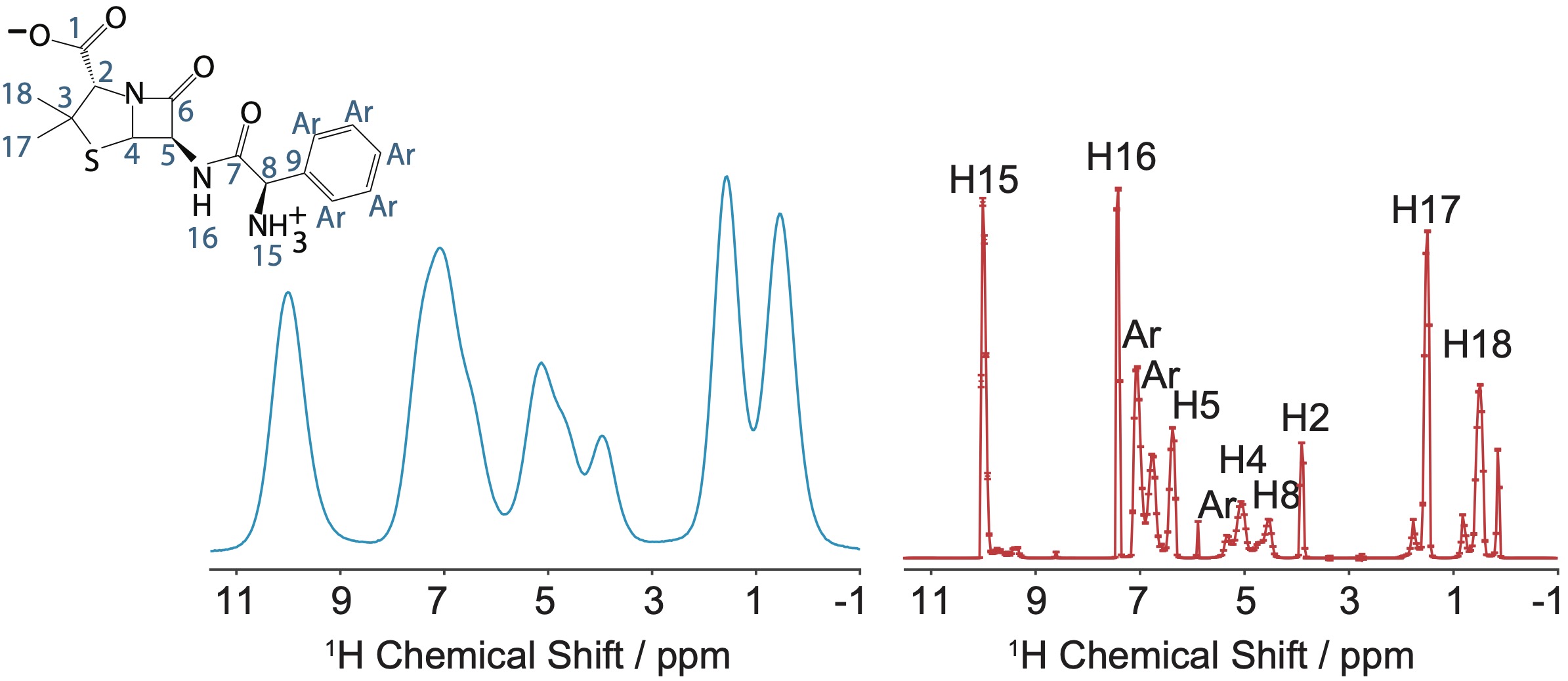Pure Isotropic Proton Solid State NMR
In solid state NMR, the linewidths of tens of kilohertz observed in 1H spectra are mostly due to the contribution of homonuclear dipolar couplings. Magic-angle spinning (MAS) greatly improves spectral resolution and at the highest rates available rates today (100-150 kHz)[1] linewidths can be reduced to hundreds of Hertz. Nevertheless, the interactions are not completely removed due to the imperfect nature of coherent averaging and the residual linewidths are still orders of magnitude larger than those encountered in solution state NMR.
Here, we propose that instead of optimizing an averaging scheme, we can parametrically map the residual terms due to the imperfect averaging of MAS[2-3] and remove them in a k-space representation.[4] More precisely, by acquiring a series of MAS spectra at increasing rates, the pure isotropic proton (PIP) signal is extracted in a parameter fitting approach.[4] This method has been demonstrated on eight different organic solids, obtaining isotropic spectra substantially narrower than the correspondent fastest MAS spectra, with linewidths down to as little as 48 Hz (Figure 1). Currently, our work is focused on the exploration of the limitations and fidelity of the approach by extending its domain of application to more complex spectra, studying the origin of artefacts in the spectra and testing new approaches of the data processing.

Figure 1. The 100 kHz MAS spectrum (blue) and the pure isotropic proton (PIP) spectrum (red) of ampicillin.
[1] Susanne Penzel, Andres Oss, Mai-Liis Org, Ago Samoson, Anja Bockmann, Matthias Ernst, Beat H. Meier, J. Biomol. NMR, 2019, 73, 19−29.
[2] M. Matti Maricq, John S. Waugh, J. Chem. Phys., 1979, 70 ,3300-3316.
[3] Bruno Simões de Almeida, Pinelopi Moutzouri, Gabriele Stevanato, Lyndon Emsley, J Chem Phys, 2021, 155, 8, 084201.
[4] Pinelopi Moutzouri, Bruno Simões de Almeida, Daria Torodii, Lyndon Emsley, J. Am. Chem. Soc., 2021, 143, 28, 9834-9841.